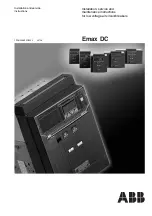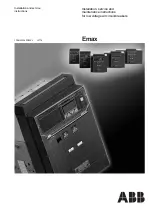
CEAG Notlichtsysteme GmbH
65
Failures
Assembly and Operating Instructions
Automatic Test System AT-S
+
with STAR
+
Technology
9. Failures
As a basic rule:
Stop device with the main switch when failures occur which can cause damage to persons, to property and/
or to operational safety.
Additionally disconnect device from power supply and protect against resetting.
After troubleshooting power up the system as described in chapter 7.7.
9.1 Interference immunity by screening
Interference (e. g. radio interferences) can occur especially in today´s highly automated industries. It can lead to
malfunctions and even to the failure of entire plants. The overlaying of different types of interference increases the
overall level of radiated failure, hence the need to protect all devices from electromagnetic interference (EMI). In
industrial process engineering in particular, a high level of immunity is required for electrical instrumentation and
control (I & C) equipment. This is why all electronic devices are subject to mandatory CE marking.
CEAG products comply with the requirements of EC Directives 2004/108/EG (EMC directive), 2006/95/EG (low
voltage directive) and are entitled to carry the CE marking. If luminaires with electronic ballast comply with the EMC
directives, then the interference produced by the high frequency operation of the electronic ballast is within the
legal limits. Nevertheless, electronic devices may cause interference in individual cases. As a rule only HF paging
systems (in the MHz range) should be used. Reliable operation cannot be guaranteed with the use of inductive
paging systems (25-40kHz).
There are a number of ways in which interference can be controlled.
Circuits should be separated from one another where possible and common returns (GND, Ground) kept as
short as possible.
Parallel cable runs should be kept as short as possible or avoided altogether.
The use of twisted cables can reduce inductive interference by a factor of 20.
The most important and most common method for suppressing interference is screening.
9.1.1 Cable screens
Cable screens usually consist of non-magnetic materials such as copper or aluminium. The most popular screens
for cables and wires are individual braided screens consisting of two interwoven sets of wires running in opposite
directions.
The density and thickness of the braid is the quality characteristic of the screen. It is essential for the screen to cover
as much as possible of the area of the conductor and so minimize the reciprocal of amplification. Cover should be
around 95% to achieve a good screen. At 60% and below there is no guarantee of reliable immunity.
Note:
Screen quick connectors SSA 5-10 for communication
lines with a cross section dimension of 5 to 10mm.
Order no. 400 71 347 133
Summary of Contents for Ceag AT-S+ C0
Page 76: ...400 71 860 177 XXX 07 12 WK...












































